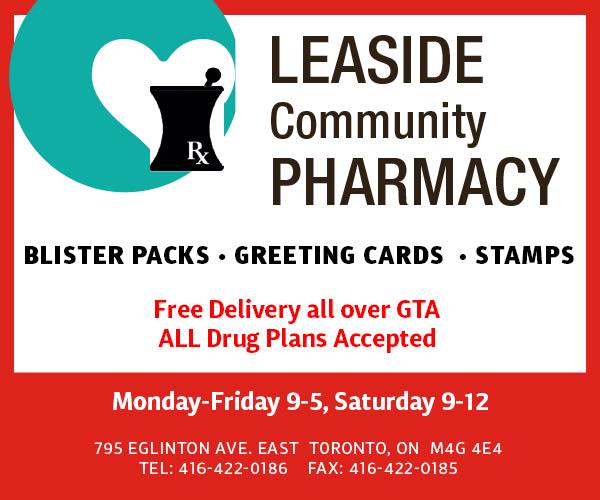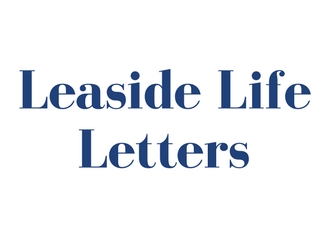
I would suggest it is… sudden recent population increase and the predictions of extraordinary future increases that are the cause of the ‘redevelopment’ projects that abound in our community.
I note the letter to the editor in your May issue outlining the “threat to the welfare and quality of life” of Leaside from “proposed and yet to be disclosed redevelopment projects unleashed by the Crosstown LRT”.
The letter blames this calamity on “the amalgamation of the six boroughs of the old Metropolitan Toronto” in 1998. It endorses the claim, expressed elsewhere as well, that things would be better if Toronto’s amalgamation were to be reversed and things were returned to the way they used to be.
Well, maybe. But maybe not.
The Ontario government notes that the Greater Toronto Area is the fastest growing region in the province. Its analysts predict that our population will increase by about 50 percent within 25 years, adding 3 million people to an area that is already feeling the effects of sudden and unprecedented population growth. It anticipates that the GTA will be home to 9.5 million residents by the time today’s kindergarten kids enter the workforce.
There is no credible observer to be found who expresses a substantially different outlook.
I would suggest it is this sudden recent population increase and the predictions of extraordinary future increases that are the cause of the “redevelopment” projects that abound in our community.
In the face of this reality, both the provincial government and the City of Toronto need to hold to strategies aimed at accommodating population growth that don’t rely on the surrender of more farmland to suburban sprawl, and which protect as much as possible the nature and character of existing communities. A key element of any such strategy will be a policy to enhance high order transit service along identified corridors and to direct future residential development to those corridors.
The Eglinton Crosstown LRT is a welcome component of such a policy.
The Crosstown should have more stops that serve the communities along its route than Metrolinx intends to provide. That said, the introduction of high order transit is none the less the best thing Leaside residents could wish for to help ensure the future welfare and protect the quality of life of their community in the face of Toronto’s increasing population.
Properly managed residential intensification along the length of the Crosstown – and along improved transit corridors on other major Toronto arteries – will reduce development pressures within our existing communities and employment zones. It will also reduce the number of cars that spill onto our neighbourhood streets in search of an alternative to major roadways that would otherwise become increasingly congested with commuters who face long daily travel distances with no way to move except by private car.
In the face of the predicted increase in population and urban complexity, Leaside residents will cry out for more coordination amongst the various services that are provided by municipal government, not more fragmentation.
It is all very well to look to the past and wish ourselves back to the day when Leaside was effectively a self-contained village with a captive industrial tax base, where the most pressing demand put on City Hall was for the pothole in front of your house to be filled in by dinnertime – and where, if it wasn’t, the mayor would hear from you that evening.
Those days are not so long past. But just the same, they exist in the past only.
The future of Leaside is that of a community that continues to be the envy of others, but one that has a place within a large and growing urban environment in which systems and connections are increasingly complex, costly, and interwoven.
Municipal revenues in future will be applied more comprehensively over an ever-increasing range of purposes. It will be necessary for key municipal planning and service delivery decisions to be made with an increased sense of their impact on a more complex metropolitan whole, and it will be necessary for metropolitan scale decisions to be made with increased sensitivity to their impact on local communities, including ours.
This is not the result of municipal amalgamation; it is the result of growth and modernization. And the Eglinton Crosstown is not the cause of the challenges that the future will bring; it is one of the solutions.
John Parker,
Cameron Cres.
On reading Leaside Life, at first blush one might conclude that everyone is the lucky owner of a house or condo that he awaits to sell at an excellent price, the said price increasing month by month. He is, as the proverbial saying goes, waiting “to laugh his way to the bank”. Skipping along with him (or her), it seems, are all the realtors.
On the other hand, the renters have to deal with the same irritating noise from road construction (LRT) with no such financial incentive to be incredibly patient. Their rent goes up and the rental situation in Toronto often prohibits them from seeking greener pastures.
Obviously this is said partly in jest; yet I am concerned in earnest about the absence of the voice of the renters in our Leaside community.
Leaside is no longer a haven of peace. Drivers becoming more and more restless, just crossing the street is a perilous journey.
Suzanne Legault,
Aerodrome Cres.
The owners of Sunnybrook Plaza want to build a condo development containing more than 400 units. These will be very attractive to new residents because the site is adjacent to the Leaside LRT station.
Unfortunately, no station entrance is planned for this corner. Residents of these condos and most of the TTC commuters in the western North Leaside will have to cross the intersection to get to a station entrance.
The Bayview-Eglinton intersection is quite busy during rush hour, and many cars are turning.
Those going left will have a separate lane for waiting for an advanced green arrow or a gap in oncoming and pedestrian traffic. Bayview will have right-turn/bus stop lanes.
It is not clear if Eglinton will have right turn lanes. If not, cars wanting to turn right will block one through lane while waiting for a gap in pedestrian traffic.
But with more commuters having to cross the street to get to and from the station entrances, the wait could last most of the traffic light cycle.
Of course, this will not be a problem with just this intersection. With major condo developments in the works along the Eglinton LRT, other intersections will experience increased pedestrian traffic, both going to and from the LRT and just going to local shops, visiting friends, or going for a walk, with or without a dog.
There will be increased car traffic from all these developments, since not all the residents will be able to commute or shop on foot or by TTC. The existing four-way stop signs will be needed to give people a chance to cross the busier side streets safely.
The only place where we can do anything to reduce pedestrian interference with vehicle traffic is where there are LRT stations, which will have underground routes for pedestrians.
If all corners at an LRT station had an entrance, commuters would not be crossing the road to get to the stations and they would not interfere with vehicle traffic as much. If developments adjacent to stations had direct access from their lobbies, residents would be more likely to cross underground even if their trips were not to the LRT.
There will be a significant increase in pedestrian traffic around the LRT stations. Additional station entrances would reduce pedestrian street crossings and hence would allow better vehicle traffic flow.
P. A. Reid,
Annesley Ave.
Ed. Note: Metrolinx says, “Similar to TTC stations, most of the 15 undersground stations for the Eglinton Crosstown with have two entrances.” There will be a secondary entrance on the north-west corner of Bayview and Eglinton and one also at the Laird station, south of Eglinton, just east of Laird. RioCan would be responsible for an entrance at the north-east corner of Bayview and Eglinton.


